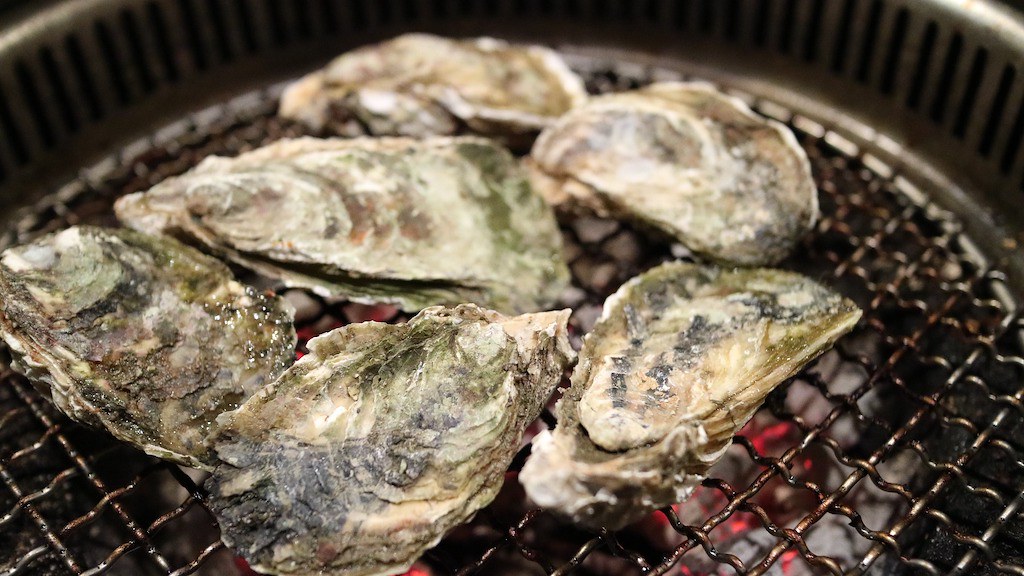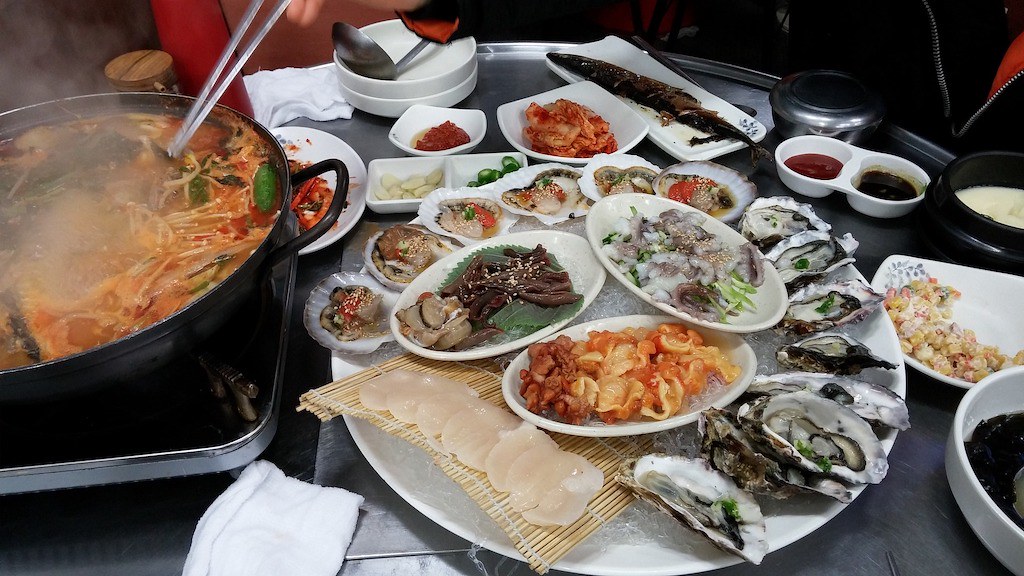This post may contain affiliate links. Please read my disclosure for details at the bottom of this page. As an Amazon Associate, I earn from qualifying purchases on this post about how to clean oysters before shucking. We hope you enjoy eating oysters!
Every November, my family eats oysters during the Thanksgiving holiday weekend. The tradition started approximately 10 years back when my coastal Savannah family would pack up our overnight bags and buy some oysters before heading to my grandmother’s house a few hours away.
Every year, our family would buy fresh local oysters from a store that would get them directly off the boat earlier that day. While they were the freshest oysters you could possibly get, they were not cleaned like those you would find in the grocery store. These oysters had all the bottom mud, gunk, and slim coated on them. In the end, I quickly learned how to clean oysters really well!
Here, we will go through step-by-step instructions on how to properly clean oysters. Before we do so, I wanted to clear up whether or not you should avoid oysters during the summer months.

Different Types of Oysters
Fun Side Note: Back in 2017, when I first started my blog as a hobby, I wrote about our family Thanksgiving oyster tradition. If you want to look back on that post, you can see how far I’ve come when it comes to writing and photography. It was just a hobby and I literally had no idea what I was doing!
Can You Eat Oysters During the Summer?
The old wives’ tale tells us to only consume oysters during the colder months–specifically during months that contain a letter ‘R.’ For generations, people avoided oysters during May, June, July, and August. For a long time, it was a good rule of thumb. You wanted to avoid eating oysters during the months they reproduced and spawned. Further, for food safety, you avoided eating oysters during the hot months when the raw seafood had a higher chance of spoiling.
That being said, nowadays you can safely buy and eat oysters all year long. Modern-day oyster farming in the United States follows strictly enforced environmental rules. This has changed how oysters are harvested, resulting in oysters that are safe year-round. If you do buy and eat oysters during the summer months, just be conscious of where the oysters come from as well as the varieties you are buying. Here’s why:
Buy Oysters from the North East During the Summer:
During the summer months, you should buy from oyster farms in colder waters. The colder water temperatures produce safely edible oysters all year-round. Almost all oysters farmed in the Northeast come from areas where the oysters do not spawn or have a quick spawn–you can read all about how these New England oysters are grown and cultivated in this interesting article from The Kitchn.

Oyster Farms!
Be Conscious of the Different Oyster Breeds:
Different oyster breeds have different spawning periods. Typically, spawning takes place during the summer months. During the spawning period, you do not want to disrupt the oysters. Not only does it affect the oyster population levels down the road, but spawning oysters also have a soft and creamy texture and flavor that tastes flat and disappointing.
Instead, pay attention to when different oyster varieties are fertile and spawning. These days, you can actually find varieties of oyster breeds that are triploids–meaning the oysters are bred to be sterile (much like seedless fruits and vegetables). They never reproduce so you do not need to worry about the spawning period.
Remember: When eating oysters at home, you can donate the shells to help bring back and restore oyster populations! Oysters help keep coastal waters clean.
Accountability in the Oyster Market:
Finally, oyster safety year-round now exists because of rules and regulations put in place to protect consumers. The farming and harvesting processes are closely monitored for safety–this includes checking the water quality for bacteria, pollution, and toxic algae. If the water is deemed unsafe, harvesting is banned during that time.
Further, by law, stores must label oysters so you know where they came from as well as the harvesting dates. That way, you can easily know about the oysters you are consuming. Don’t be afraid to ask about the variety of oysters as well!

A Closeup Shot of Oysters
Interestingly, oysters cannot be imported from the European Union at this time because their safety guidelines are not as strict. That is crazy to think about because many food safety rules in the EU are much stricter than in the United States. You can read more about why oysters are safe to eat year-round in this The Kitchn article!
Though you can eat oysters safely all year long, I still recommend eating them during the fall and winter months. The flesh tastes the best out of cold water!
How to Clean Oysters Before Shucking:
Now that we learned about when you can eat oysters, let’s learn how to properly clean oysters before shucking. The process is actually incredibly simple and only takes a few minutes! Below, we list step-by-step instructions on how to clean oysters:

Oyster on a Grill. People in South Korea Often Eat Grilled Oysters!
Step-By-Step Instructions on How to Clean Oysters:
- First, place the oysters in a large colander. You may need to do this in batches if you are cleaning a large number of oysters. You can also do this with a big bucket and hose outside if you are preparing an extremely large amount of oysters.
- Next, rinse the oysters with cold water. I recommend rinsing off each oyster carefully, much as you would do with fresh produce. DO NOT rinse with hot water. Oysters are raw seafood. Handle with cold water for food safety.
- If possible, keep the oysters on crushed ice or small ice cubes when washing them. Not only does this keep the oysters cold, but the ice helps to rub off dirt.
- Then, if the oyster shells have a lot of gunk and grime, use a scrub brush to remove any excess mud.
- Finally, check each oyster for open shells before shucking or cooking. If you find open shells, do not cook or consume the oyster. It may have already spoiled.
- Once cleaned, you can shuck the oysters and eat them raw. Or, you can grill, steam, or boil your oysters!
Note: If you shuck an oyster and it is filled with mud on the inside, throw it away. This oyster may not be safe to consume raw.
There you have it! Cleaning oysters before shucking is an easy process. You just need to make sure to do it thoroughly. Happy oyster-eating!

I Always Have to Show Photos of Korean Food–As a Korean and Southern Household, We Eat Oysters Southern Style as Well as Korean Style.
We Hope You Enjoyed Learning How to Clean Oysters
In the end, we hope you enjoyed learning about how to clean oysters before shucking (or cooking).
If you would like to read more about cooking, you can find further recipes on our blog. We listed some of our favorite Carving A Journey southern recipes below! For reference, many recipes are influenced by our blended Korean and Southern heritage.
Further Carving A Journey Recipes:
If you have any questions or comments, you can also email us at [email protected].
And, finally, we would love to hear from you through our social media as well! You can follow us at @carvingajourney on Instagram, Twitter, Facebook, and Pinterest. Or, if you would like more articles like these, you can subscribe to our blog by joining our mailing list. We hope you enjoyed learning about how to clean oysters! Thank you so much for stopping by!
Carving A Journey is a participant in the Amazon Services LLC Associates Program, an affiliate advertising program designed to provide a means for sites to earn advertising fees by advertising and linking to Amazon.com. Although we may earn commissions for our endorsement, recommendation, testimonial, and/or link to any products or services from this website, these opinions are my own and I fully support these products.

